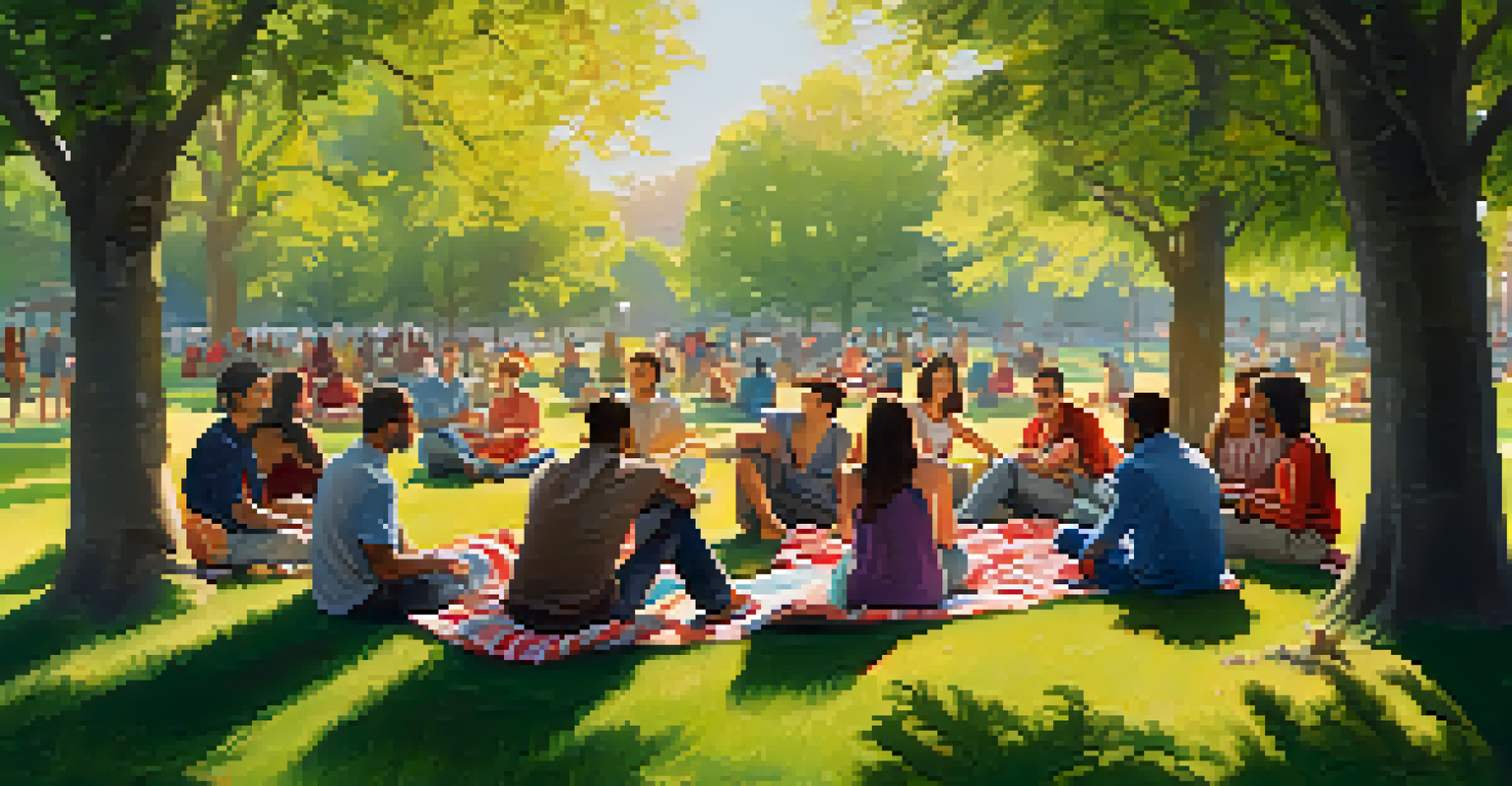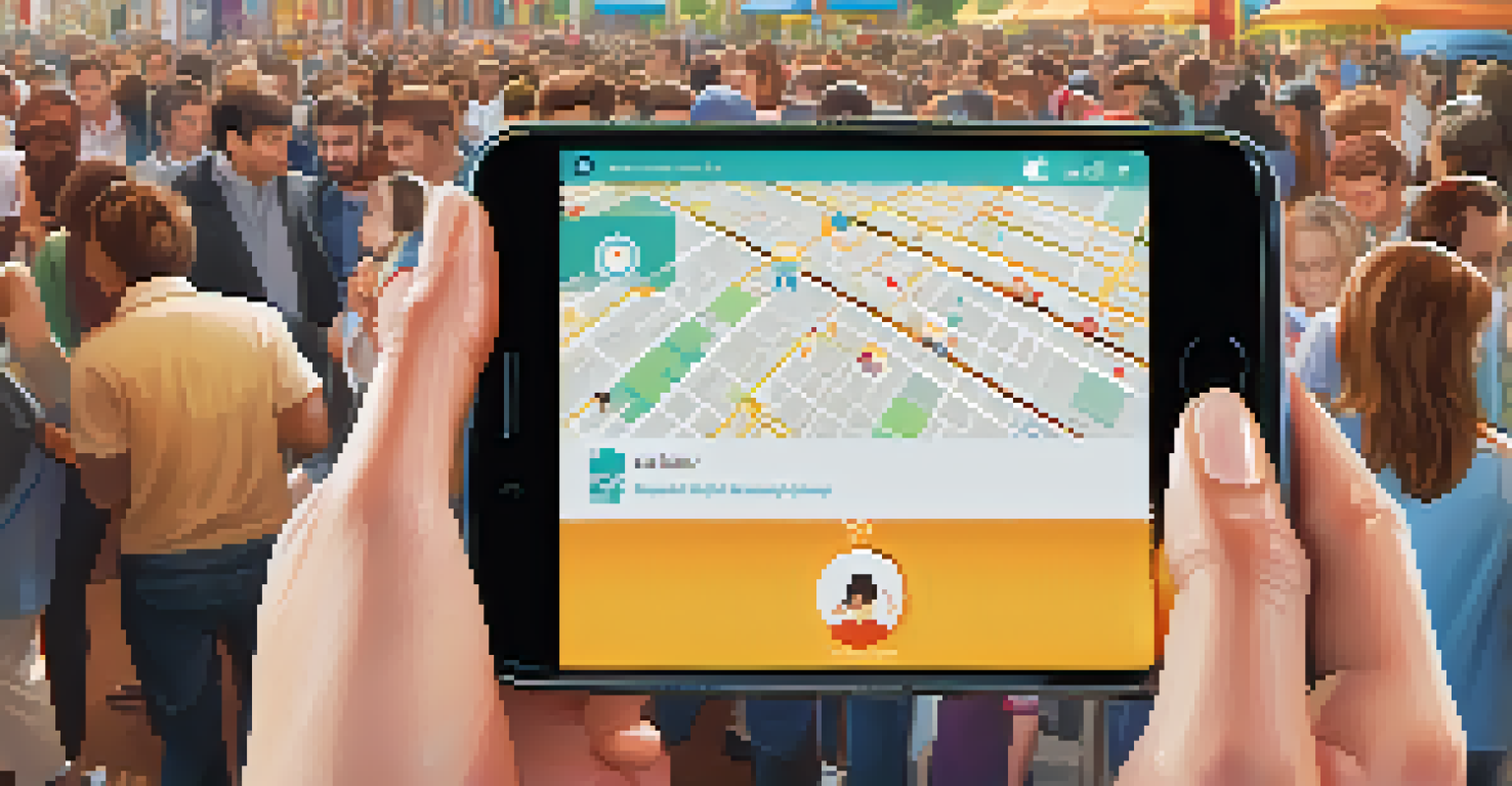How to Choose Safe Spaces at Parties and Gatherings

Understanding Safe Spaces and Their Importance
Safe spaces are environments where individuals feel secure, respected, and accepted. At parties and gatherings, these spaces allow people to express themselves without fear of judgment. Recognizing the importance of safe spaces can enhance your social experience and contribute to a more inclusive atmosphere.
A safe space is a place where you can be yourself without fear of judgment.
Imagine a safe space as a cozy nook in a bustling café, where you can chat freely without interruptions. In social settings, these spaces can foster connection and communication among attendees. They are essential for ensuring everyone enjoys the event without feeling anxious or uncomfortable.
When you prioritize safe spaces, you encourage open dialogue and understanding among diverse groups. This not only enhances your experience but also promotes empathy and respect within the wider community. So, knowing how to identify these areas is crucial for a positive gathering.
Observing the Venue Layout for Comfort Zones
When you arrive at a party or gathering, take a moment to observe the layout. Look for areas that appear to be quieter or less crowded, as these often serve as natural safe spaces. A cozy corner with comfortable seating away from the noise can provide a perfect retreat for those needing a break.

Consider how the venue is structured; spaces with clear boundaries, like separate rooms or outdoor areas, can create a sense of safety. These zones allow guests to choose where they feel most comfortable interacting. The layout can significantly influence the vibe of the event and dictate how safe you feel.
Importance of Safe Spaces
Safe spaces foster open dialogue and respect, enhancing social experiences and inclusivity.
Additionally, check for designated areas, like a chill-out zone or a wellness corner, which are often set up for relaxation. These spaces not only offer a break from intense socializing but can also be great for deeper conversations. Understanding the venue's setup helps you navigate the event with more confidence.
Choosing the Right People to Surround Yourself With
The people you choose to socialize with play a vital role in creating a safe space. Surrounding yourself with supportive and understanding individuals can drastically improve your comfort level at gatherings. Look for friends or acquaintances who share your values and respect boundaries.
The best way to find yourself is to lose yourself in the service of others.
Think of it like picking your team for a game; you want players who will uplift and encourage you. Engaging with people who foster a positive atmosphere can help you feel more relaxed. Their presence can serve as a buffer against negative interactions or uncomfortable situations.
Don’t hesitate to seek out those who are also looking for a safe space. A simple smile or nod can initiate a connection with someone who shares your need for comfort. Together, you can form a supportive circle that enhances the overall experience of the event.
Recognizing Signs of Uncomfortable Situations
Being aware of your surroundings is key to identifying safe spaces. Look for signs of discomfort in yourself and others, such as body language or facial expressions. If someone appears tense or withdrawn, it might be a cue that the environment isn't conducive to a safe atmosphere.
For example, if conversations become heated or if someone seems isolated, it may indicate a lack of safety. Recognizing these signs allows you to act—whether that means stepping away or engaging in a different activity. Your intuition can guide you toward more positive interactions.
Choosing Supportive Company
Surrounding yourself with understanding individuals can significantly improve your comfort level at gatherings.
Also, trust your gut feelings. If a situation feels off, it's okay to remove yourself from it. Prioritizing your comfort and well-being is essential, and being proactive can help others feel safe as well.
Creating Your Own Safe Space at Gatherings
Sometimes, the best way to ensure a safe space is to create one yourself. If you find yourself in a crowded or chaotic environment, consider setting up a small area where you and your friends can gather. Bringing a few cushions or blankets can help establish a cozy retreat.
Think of it as building your own fort—something that offers comfort and security amid the noise. By doing this, you can invite others who may be feeling overwhelmed to join you, fostering a sense of community. This proactive approach not only benefits you but can also help others feel included.
Moreover, don’t hesitate to communicate your needs to hosts or organizers. Letting them know what you require for a safe space can lead to adjustments that benefit everyone. Your initiative can inspire others to prioritize safety, creating a ripple effect throughout the gathering.
Using Technology to Enhance Safety at Events
In today's digital age, technology can be a valuable ally in creating safe spaces. Consider using apps that allow you to share your location with trusted friends during an event. This way, they can check in on you if you ever feel uncomfortable or need support.
Social media can also serve as a platform to communicate with others about safe spaces at gatherings. Joining group chats or event pages can help you stay informed and connected with like-minded individuals. Technology helps bridge the gap between people, especially in large gatherings.
Creating Your Own Comfort Zone
Establishing a personal safe space at events can provide comfort and encourage community among attendees.
Additionally, some events offer safety features, like designated check-in points or emergency contacts. Familiarizing yourself with these resources can enhance your sense of security. Embracing technology in these ways allows you to focus on enjoying the event while staying safe.
Reflecting on Your Experience at Gatherings
After attending a party or gathering, take time to reflect on your experience. Consider what made you feel safe or uncomfortable during the event. By analyzing your feelings and interactions, you can gain valuable insights for future gatherings.
This reflection process is like reviewing a movie; you assess the plot, characters, and your emotional responses. Understanding what worked well and what didn't can help you make informed choices about where to go next. Your reflections can guide you toward more enjoyable experiences.

Also, share your insights with friends or peers. Engaging in conversations about safe spaces can foster a deeper understanding among your social circle. Together, you can work towards creating a culture of safety and respect at all events.